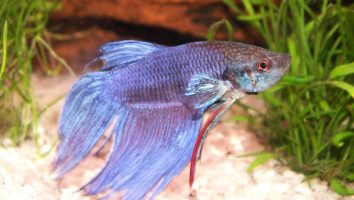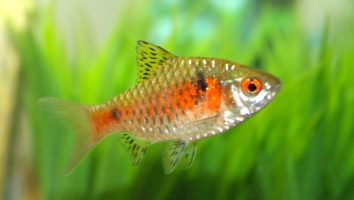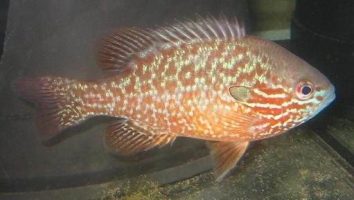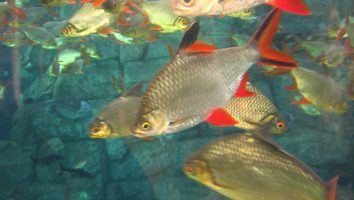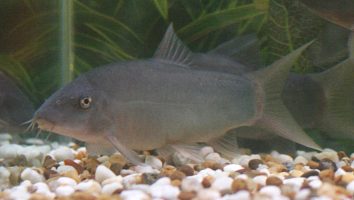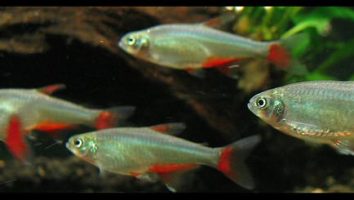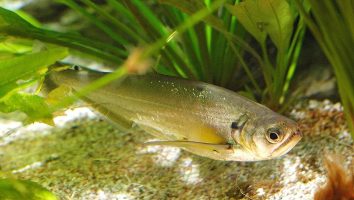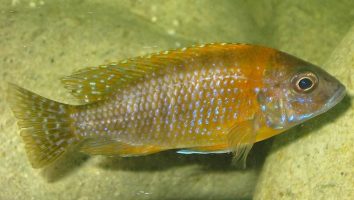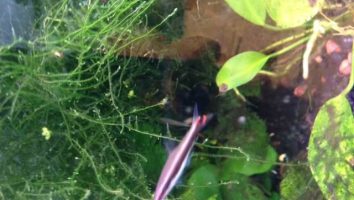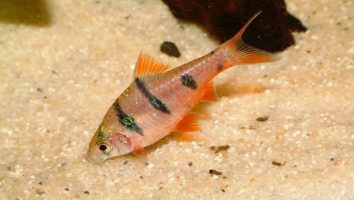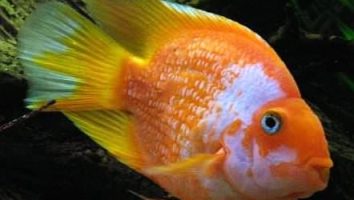The striped headstander is a freshwater fish that is native to South America. It is a peaceful fish that does well in a community tank.
This fish gets its name from its habit of “standing” on its head at the bottom of the tank. This is usually done to search for food.
The striped headstander is a hardy fish that is easy to care for. It is a good choice for a beginner fish keeper.
This fish can reach a length of 6 inches (15 cm).
Table of contents
Species overview
Striped headstander (scientific name: Chilodus fasciatus) is a freshwater fish that’s native to the Amazon basin. As their name would suggest, these fish are known for their habit of “standing on their heads” at the bottom of the tank.
They are a hardy species that can adapt to a wide range of water conditions, which makes them a popular choice for beginner aquarium keepers.
Striped headstanders are peaceful fish that do well in community tanks. They are not known to be particularly aggressive, although they may nip at the fins of slower-moving tank mates.
These fish are omnivores and will eat a variety of foods, including pellets, flakes, and live/frozen foods.
Appearance
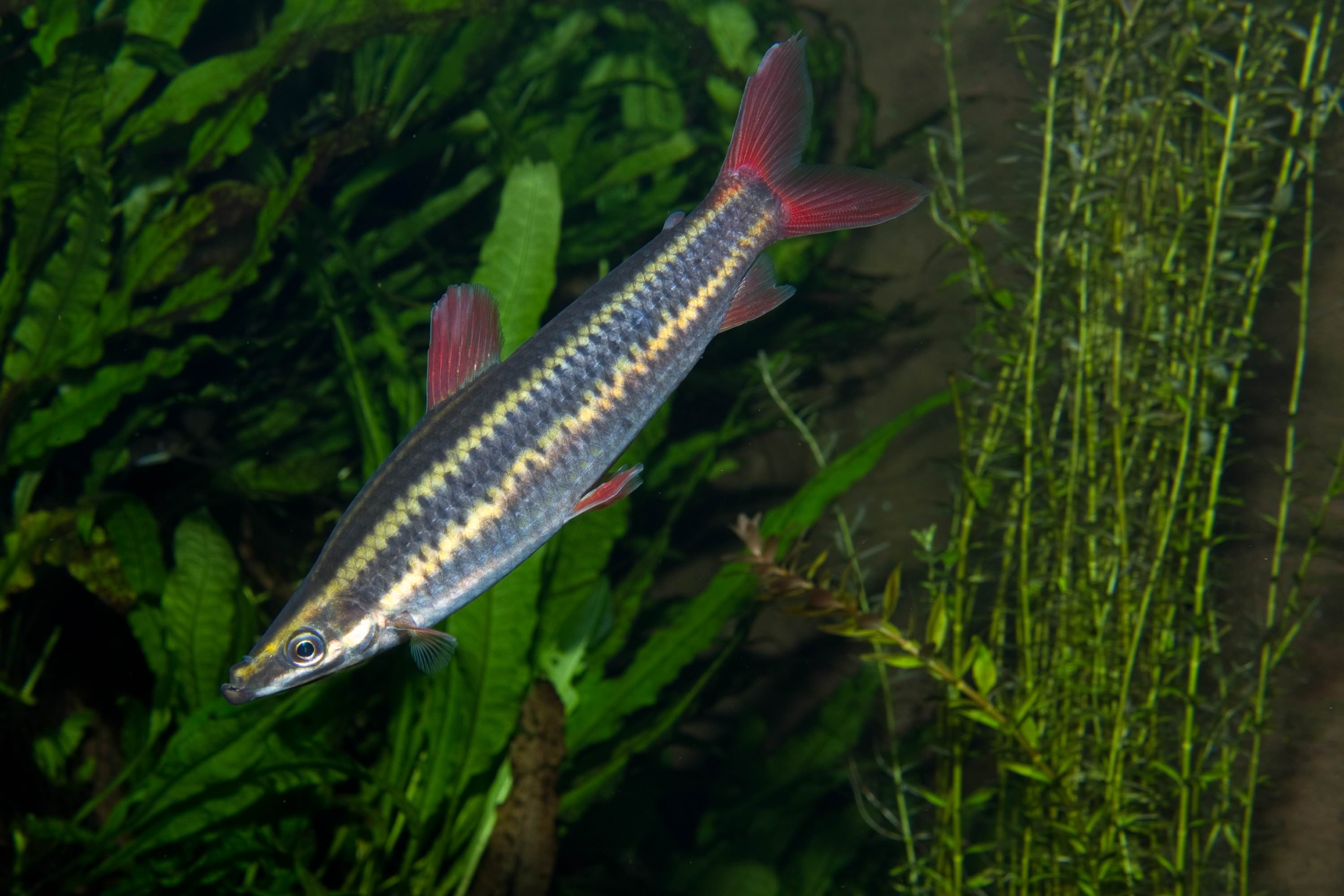
As you can probably guess from their name, one of the most notable features on these fish is the black stripes that run vertically down their heads. There are usually 3-5 of these stripes, and they’re quite thick.
These stripes contrast nicely with the rest of the fish which is a pale silver color. The fins on the Striped headstander are also silver, but they have a bit of a transparent quality to them.
The dorsal fin is tall and starts about two-thirds of the way back on the body. This fin is triangular in shape and tapers off to a point.
The Striped headstander has a forked caudal fin that’s slightly taller than their dorsal fin. Their anal fin is shorter than the dorsal fin and starts just behind the vent.
This fish has a very thin body that’s shaped like a torpedo. They have a small mouth that’s located at the end of a long snout.
Lifespan
The lifespan of a striped headstander is around 5 to 10 years. These fish are relatively hardy and can live in a wide range of conditions.
As with any fish, the lifespan of a striped headstander can be impacted by the level of care they receive. Things like poor water quality, stress from bad tank mates, or a suboptimal diet can all shorten their lifespan.
Size
Striped headstanders can grow to be about 6 inches in length.
Tank
Tank Size
The recommended minimum tank size for a Striped Headstander is 30 gallons. If you’re looking for a freshwater fish that can fit in an average-sized tank, this is not the fish for you.
If you want to keep two Striped Headstanders in the same tank you’ll want to add at least another 30 gallons to that minimum number if you want them to thrive.
Another reason why you need to provide enough space is for the sake of enrichment and comfort. These fish like to roam and will often run gentle but steady laps around your tank. Giving them a little bit of extra space can go a long way in making sure they can comfortably turn around in the tank.
Water Parameters
The striped headstander is a tropical freshwater fish that’s native to the Amazon Basin. As such, it has specific water parameters that it needs in order to thrive.
To start, the water temperature should be between 70-80 degrees Fahrenheit. The pH level should be between 6.0-8.0, and the water hardness should be between 5-19 dGH.
The striped headstander is also a bit sensitive to nitrate levels, so it’s important to do regular water changes and keep nitrate levels low. Ammonia and nitrite are also dangerous to fish, so always keep these levels at 0 ppm.
What To Put In Their Tank
When setting up the inside of their tank there are a few key things to remember. First and foremost, these fish come from slow-moving waters in the wild.
Your aquarium should reflect this as much as possible. We recommend using a filter that produces little to no flow. You can also use an air stone to help circulate the water if you’d like (but this isn’t required).
The substrate in their tank can be anything you want. These fish don’t tend to dig much so you don’t need to worry about that.
Plants are also a great addition to their habitat. They will help provide some cover for your fish and make the inside of the tank look a lot nicer. Just be aware that these fish might uproot some of the plants while they’re swimming around.
You can also add some driftwood or rocks to their tank if you’d like. This isn’t required, but it can help provide some additional hiding spots for your fish.
Common Diseases
Striped headstanders are a pretty hardy fish, but they’re not immune to disease. There are a few things that you need to look out for when keeping these fish.
The most common disease that affects striped headstanders is hole-in-the-head disease. This is a condition that’s caused by poor water quality and the presence of activated carbon in the tank.
It presents itself as one or two pits/holes in the skin of your fish’s head. While it’s almost always curable (fixing your water quality and removing activated carbon is usually all you need to do), it will usually leave some scarring on your poor fish!
Other than that, the usual suspects like ich and other infections can affect these fish. Be on the lookout for anything out of the ordinary and take action immediately if you notice anything off.
As always, the best way to prevent disease is by keeping the tank in pristine condition. Regular water changes and close attention to water quality will go a long way in keeping your fish healthy and disease-free.
Behavior & Temperament
The striped headstander is a peaceful and relatively shy fish. It’s not the most active fish in the world, but it’s not a couch potato either.
You’ll usually find this fish hanging out near the bottom of the tank or in groups near the plants. They’re not the type of fish to swim in the middle of the tank or at the surface.
Although they’re not the most social fish, they do like to be around others of their own kind. They’re not territorial, so they won’t fight with each other. In fact, they school together quite often.
When it comes to striping, the males tend to be more colorful than the females. The males also have longer fins. If you’re looking for a striped headstander that’s going to stand out in your tank, then you should get a male.
Tank Mates
When it comes to finding the right tank mates for a striped headstander, there are a few things to keep in mind.
First, this is a predatory fish. It’s not huge, but it can and will eat smaller fish. As a result, you need to be careful about the size of the fish you add to the tank.
The second thing to consider is that striped headstanders are from South America. This means they prefer warm water. You need to make sure that any fish you add can tolerate these conditions.
Third, striped headstanders are bottom-dwellers. They’re not going to swim in the middle or top of the tank. This gives you some flexibility in terms of choosing tank mates.
Here are some compatible fish to consider:
- Tetras
- Rainbows
- Danios
- Barb
- Corydoras
- Plecos
Breeding
The first step in breeding striped headstanders is to sex them. These fish are easy to sex because males and females have different coloring. Males are much more colorful than females. They also have longer fins.
Once you’ve sexed your fish, you’ll need to set up a breeding tank. It should be at least 20 gallons and have a lot of hiding places. Driftwood, caves, and plants are all good options.
The water should be soft and acidic. Aim for a pH of 6.5 and a hardness of 3 dGH. The temperature should be between 72 and 82 degrees Fahrenheit.
When the tank is ready, add two females for every male. Then, feed the fish plenty of live food. This will help to trigger spawning.
Spawning usually happens at night. The female will lay her eggs on a flat surface like a rock or piece of driftwood. The male will then fertilize them.
Once the eggs have been fertilized, the male will guard them. He will also fan them with his fins to keep them oxygenated.
Eggs usually hatch in 7-10 days. When they hatch, the fry will be very small. They will need to be fed live food like baby brine shrimp.
As they grow, you can start to introduce them to flake food. Once they are big enough, they can be moved to the main tank.
Conclusion
The striped headstander is a unique and interesting fish that is sure to add some color and personality to your tank. They are relatively easy to care for, but there are a few things you will need to keep in mind.
One of the most important things to remember is that they need a well-oxygenated tank. Be sure to provide them with plenty of space to swim and plenty of hiding places.
Overall, we think the striped headstander is a great choice for most aquarium enthusiasts. They are a hardy fish that is sure to add some excitement to your tank!

